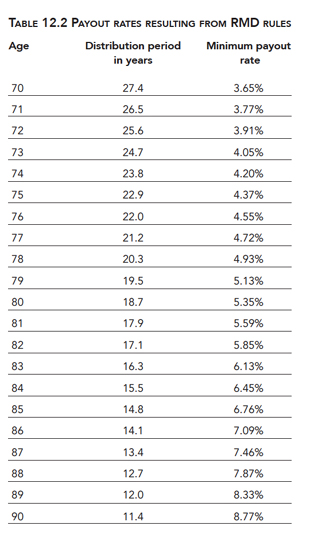Retirees beware: A key tax deadline is looming
Retirees who've attained age 70-1/2 or older by Dec. 31 face a looming tax deadline. They must withdraw minimum amounts from their deductible IRA and retirement accounts, or they'll face hefty IRS penalties. According to a recent survey by Fidelity, nearly 68 percent of its IRA customers who are subject to these requirements for 2014 hadn't yet made their full withdrawals as of Oct. 24.
The IRS' required minimum distributions (RMD) prevent you from indefinitely delaying payment of income taxes on your accounts by mandating minimum amounts that you must withdraw each year. Those amounts are then added to your taxable income.
The IRS rules regarding RMDs are quite complex, so let's look at just some of the most critical features. We'll then examine strategies you can adopt to avoid paying penalties.
What plans are subject to the rules?
RMD rules apply to: deductible IRAs, deductible and Roth 401(k) plans, 403(b) plans for nonprofit organizations and 457(b) plans for government employers.
Note that Roth IRAs aren't subject to the RMD rules, but Roth 401(k), 403(b) and 457 plans are. If you participate in a Roth version of one of these plans and want to avoid the RMD, you'll want to roll over your account to a Roth IRA.
Regular investments and bank accounts without special retirement tax treatment aren't subject to the RMD rules at all.
When are you subject to the rules?
If you attain age 70-1/2 by Dec. 31, you'll need to withdraw the RMD that applies to you by that date. As a practical matter, if your 70th birthday is June 30 or earlier, you'll be subject to the rules in the current year. If your 70th birthday is on or after July 1, you aren't subject to the rules until the following year.
The IRS allows one exception: In the first year -- and the first year only -- in which you're subject to the rules, you can delay your RMD until April 1 of the following year. If you take advantage of this delay, however, you'll have two taxable withdrawals in the following year: one for the prior year and one for the current year.
How much must you withdraw?
You can determine the RMD that applies to you by starting with the value of your account on Dec. 31 of the previous year. Divide the total of your account by your life expectancy according to an IRS table. Here's a table from my book "Money for Life" that does the calculation for you and shows you the percentage of your account that you must withdraw.
For example, suppose your account is worth $100,000 on Dec. 31, 2013, and you're old enough to be subject to the RMD rules. In this case, by Dec. 31, 2014, you'll need to withdraw $3,650 (that's 3.65 percent of $100,000) and add it to your taxable income for 2014.
Note that different rules apply if your spouse is more than 10 years younger than you and to beneficiaries after the account holder has died.
One last thing to be aware of (a trap for the unwary): If you use the 4 percent rule or some other strategy to generate a retirement paycheck, or if you invest in a managed payout fund that automatically generates a retirement paycheck for you, such as funds sponsored by Fidelity or Vanguard, you might not be withdrawing sufficient amounts to cover the full RMD that applies to you. Be sure to check each year to verify that you've withdrawn enough to cover your RMD.
What's the penalty?
The IRS imposes a 50 percent penalty on the amount you should have withdrawn but didn't. In the above example, suppose you withdrew only $1,650 in 2014 instead of $3,650. Your withdrawal would be $2,000 short. In that case, you'd pay a penalty of $1,000.
Bottom line: Don't violate the RMD rules!
Special situations
If you have multiple IRAs, you're allowed to satisfy your total RMD by making a single withdrawal from just one to cover the RMDs for all. You aren't required to withdraw the RMD from each account. This rule also applies to 403(b) plans but not to 401(k) and 457 plans. With these last two, if you have multiple accounts, you must make the RMD from each one.
One more: If you're still working for the employer that sponsors your retirement plan, you don't need to make the RMD until you actually retire, even if you're older than age 70-1/2 (but this deal doesn't apply if you own 5 percent of more of the business).
What are auto-pilot ways to avoid the penalty?
You have a few options. If you buy a traditional annuity from an insurance company that pays you (and your spouse or beneficiary) for the rest of your life, you're deemed to automatically comply with the rules for the amount of your savings that you've used to purchase the annuity. If you have a guaranteed lifetime withdrawal benefit (GLWB), however, you'll want to check with your insurance company regarding compliance with the RMD rules.
If you don't buy an annuity and invest your retirement accounts to generate retirement income, many IRA, 401(k), 403(b) and 457 administrators will allow you to elect periodic distributions that automatically comply with the RMD rules.
As you approach your 70th birthday, you'll want to consult with your tax advisor for guidance on complying with the rules.

